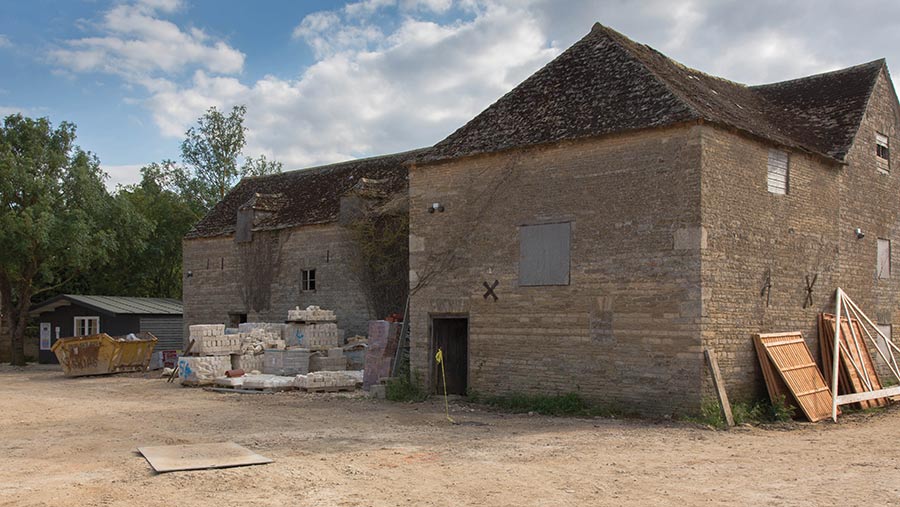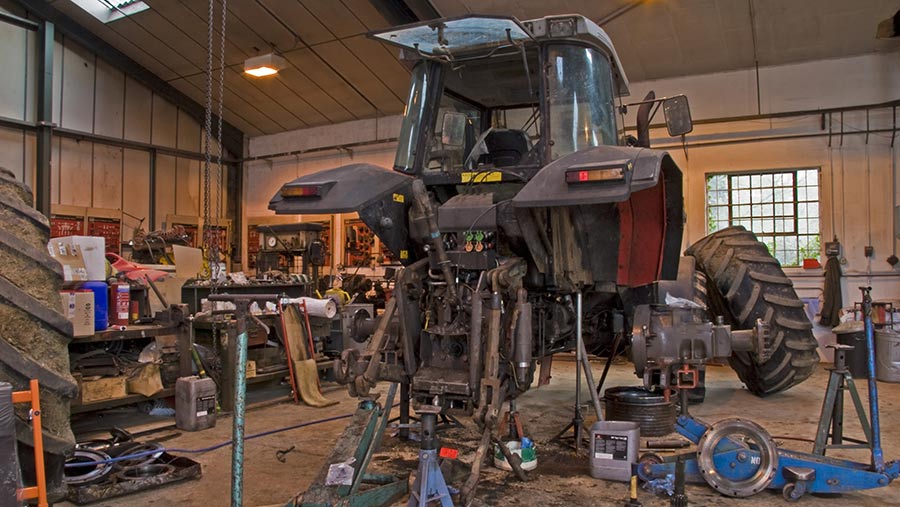Top tips for successful commercial lets on farm
 © Tim Scrivener
© Tim Scrivener An additional income stream can often be found with buildings that are no longer fit for purpose or in need of conversion.
A vital factor in this type of diversification is the tenant, says John Williams, a consultant in Knight Frank’s rural consultancy asset management team.
While farmers may be used to renting land, renting out farm buildings under commercial agreements raises different challenges.
See also: Tax tips for farm holiday accommodation management
“While there are possible pitfalls when letting farm buildings, there is great potential to both add value to your property and to enhance income to the business overall,” says John.
He suggests the following important questions to ask and pitfalls to avoid in commercial lets.
Is the tenant a good match for the area and farm situation?
A tenant might see the appeal in creating office space in a very remote location, but that doesn’t mean they will make a go of it and remain for the long term.
Finding a tenant whose business suits the region and the farm situation is important, because it means they are more likely to be profitable and will stay longer.
For example, if the tenant is involved in storage and distribution, the building must have good transport links, ideally close to a main road.
It is true that a tenant will know their business better than anyone, but it is the landlord who will understand the area and what should or shouldn’t work.
If the building being let is on the farm, the tenant’s business must be compatible with that. This is particularly important if the farmhouse is nearby.
Ask questions about operating hours, vehicle movements and noise levels, as restrictions may need to be included in the lease.
Don’t overlook pre-tenancy checks
This is where hiring the services of a professional can pay dividends.
From referencing to credit checks, an agent will know what is needed and what red flags to look out for – business history, for example, how successful they have been and what other businesses they have run.
Where the prospective tenant has previously rented, speak to their landlord to find out the good, the bad and the ugly.
If it is a new business venture, find out what funding it has.
Flexibility can result in a better outcome
A tenancy does sometimes involve an element of risk.
“One of the farm businesses we act for had a good tenant who expanded their business in 2019 and took on an additional unit within the holding to facilitate that, backed up by new contracts, which we had sight of.
“Then came the pandemic, but with government funding the business survived. Once that support fell away the business was forced to restructure and because of flexibility from the landlord, hard work by the tenant and a good landlord-tenant relationship, it resulted in a good outcome for all.
“Sometimes, it doesn’t work out and that’s why having a good agreement in place will provide the necessary back stop.”
Red flags that a tenant might be struggling
Nothing is more indicative of a business struggling than lapses in rent payments.
Edward Maryon, an associate in the restructuring and recovery team at Knight Frank, says rural landlords should pay attention to changes in their tenant’s communication habits, especially leading up to payment dates.
“A lack of communication or irregularities in this regard may serve as a red flag, signalling potential financial strains for tenants.”
The failure to maintain the upkeep of a property is another warning sign.
“Financial constraints may lead to a reduction in maintenance efforts as tenants prioritise the payment of essential expenditures over maintenance,” says Edward.
Look out for changes to how the business operates too, he adds.
“It’s good to watch out for reduced staff availability or the inability to meet payroll obligations, as this may result in tenants having to shorten opening hours.”
Monthly, quarterly or annual rent payments?
Quarterly or yearly rent payment arrangements were once common, but now more agreements stipulate monthly payments.
This can be better for tenants from a cashflow perspective and will prevent large arrears from accruing.
Ideally, payments should be by direct debit.
“The level of rents for commercial lets is currently pretty static, but there is more pressure on landlords to give rent breaks to get tenants into a property, to offer that point of difference when vacancy rates are higher.”

© Nicholas and Sherry Lu Aldridge/FLPA/ImageBroker/Shutterstock
Set clear rules on building use
Have a clear, written agreement, signed by both parties, on what a building can and can’t be used for, factoring in what happens if the business grows or shrinks.
It is reasonable for landlords to agree to a tenant putting fixtures and fittings needed for their business type in place, provided the building is reinstated when the tenancy ends.
Disturbance and noise are considerations, but if a farmer wants to create an income stream from the assets they have there does need to be an expectation that there could be some degree of these.
For example, storage might just mean visits by users a couple of times a year, but it is often more frequent.
Insurance
The property owner or landlord, in this case the farmer, is responsible for arranging the building insurance.
Buildings will mostly be covered by existing farm or estate policies, but it is important to notify the insurer that there is a tenant and what the building is being used for. The insurer will adjust the policy and premium accordingly.
The premium might not change at all, but if, for example, the tenant is using chemicals or carrying out a business where there is a higher risk of fire, it could go up.
Under the terms of most commercial lease agreements, that additional premium can be charged to the tenant.
The tenant will need to insure the equipment within the business.
How to mitigate financial risk
It has been a challenging year for businesses, and rural-based enterprises are not immune. Company insolvencies in England and Wales are at their highest level since 2009 amid rising inflation, increased borrowing costs and weakened consumer confidence.
Some farms and estates that lease property to commercial businesses are sharing the financial pain of their tenants.
Knight Frank’s John Williams says there are steps landlords can take to mitigate that risk.
Personal guarantees Obtain personal guarantees from tenants to recover debts from company directors or partners in the event of insolvency.
Regular tenant engagement Reviews and regular communication help to nurture good relationships with tenants.
Allow flexibility for struggling tenants It is in the interest of both parties to get struggling tenants back on track, so a certain degree of leniency can result in a better outcome.
Consider lease restructuring In difficult situations, it can also be beneficial to adjust payment plans to accommodate cashflow or introduce other lease restructuring options.
